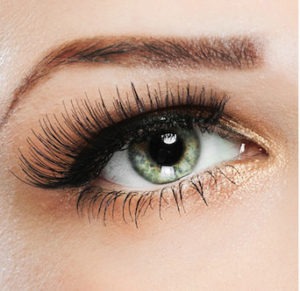 Considering eyelid surgery? Wondering if it will leave any scars? Scarring after eyelid surgery is a common concern for many patients. In this blog post, we will explore what to expect in terms of scarring after eyelid surgery, factors that influence scarring, how to minimize scarring through surgical techniques, post-surgery care to reduce scarring, and long-term management of eyelid surgery scars. Let’s delve into the world of eyelid surgery and scarring. Khan Eyelid and Facial Aesthetics, led by oculoplastic and reconstructive surgeon Dr. Tanya Khan, provides eyelid surgery to patients in Plano, Dallas, Austin, Texas, and surrounding locations.
Considering eyelid surgery? Wondering if it will leave any scars? Scarring after eyelid surgery is a common concern for many patients. In this blog post, we will explore what to expect in terms of scarring after eyelid surgery, factors that influence scarring, how to minimize scarring through surgical techniques, post-surgery care to reduce scarring, and long-term management of eyelid surgery scars. Let’s delve into the world of eyelid surgery and scarring. Khan Eyelid and Facial Aesthetics, led by oculoplastic and reconstructive surgeon Dr. Tanya Khan, provides eyelid surgery to patients in Plano, Dallas, Austin, Texas, and surrounding locations.
Understanding Eyelid Surgery
Eyelid surgery, or blepharoplasty, stands out as a transformative cosmetic procedure targeting the eyelids to enhance eye appearance. By meticulously removing or repositioning excess skin, fat, or muscle, this surgery aims to address concerns such as droopy eyelids and under-eye bags that contribute to a tired or aged look. Candidates for this procedure include individuals seeking cosmetic improvement or those requiring functional benefits, such as improved field of vision obstructed by sagging eyelid skin.
The operation is adaptable, allowing for customization based on the patient’s specific aesthetic goals. It can be conducted on the upper eyelids to lift and redefine the eye contour or on the lower eyelids to eliminate puffiness and smooth out wrinkles. In some cases, patients opt for both to achieve a more comprehensive rejuvenation.
The technique employed during eyelid surgery is paramount to its success. Surgeons may opt for a traditional approach, involving an incision along the eyelid crease for upper blepharoplasty or just below the lash line for lower blepharoplasty. Alternatively, a transconjunctival approach, where incisions are made inside the lower eyelid, is favored for addressing under-eye concerns without leaving visible external scars.
This procedure not only serves aesthetic purposes but also enhances functional aspects by potentially improving peripheral vision for those with severely drooping eyelids. As with any surgery, a detailed consultation with a qualified surgeon is crucial to understanding the potential outcomes, risks, and tailored approach best suited to meeting the individual’s expectations and ensuring a harmonious and natural-looking enhancement.
Scars From Eyelid Surgery
Eyelid surgery, while transformative, carries the inevitability of scarring as does any procedure requiring incisions. The extent and visibility of these scars, however, are greatly influenced by a combination of factors unique to each patient and the specifics of the surgical approach employed. Typically, the scars left by eyelid surgery are discreet, often hidden within the natural folds of the eyelid or along the lash line, making them less noticeable.
The nature of the skin around the eyes — delicate and thin — allows for scars to blend more seamlessly into these natural contours compared to other areas of the body. Surgeons carefully plan incision sites to align with these creases, particularly in upper eyelid surgery, where the crease offers a natural camouflage. For lower eyelid surgery, incisions are strategically placed just below the lash line or, in some techniques, inside the eyelid, further reducing any visible scarring.
The aftermath of the surgery in terms of scarring also depends on the patient’s skin healing properties, which vary widely among individuals. Some people may experience more pronounced scar formation due to factors like genetics, age, and skin color, with lighter skin types sometimes showing more noticeable scar tissue compared to darker tones.
An essential aspect of managing scar visibility is adherence to post-surgical care protocols. Proper care can significantly mitigate the risk of complications or more prominent scarring. This includes following all provided instructions on wound care, avoiding activities that may strain the eyes and compromise healing, and protecting the area from sun exposure, which can exacerbate the visibility of scars.
Factors That Influence Scarring
The visibility and development of scars following eyelid surgery can be significantly impacted by a variety of factors that extend beyond the surgical technique and patient care. Notably, the individual’s skin type plays a pivotal role; those with more elastic and youthful skin generally have a tendency to heal more effectively, resulting in less noticeable scarring. In contrast, older individuals may notice their skin doesn’t bounce back as readily due to decreased elasticity, potentially leading to more pronounced scarring.
Genetic predispositions also have a hand in how one’s skin heals. Certain genetic backgrounds may predispose individuals to keloid or hypertrophic scars, which are raised, thickened areas of scar tissue. Understanding one’s genetic inclination towards these scar types can be beneficial in discussing potential outcomes and preventative treatments with the surgeon beforehand.
Another key factor is the surgical expertise and technique. A surgeon’s ability to execute precise incisions and sutures can minimize tissue trauma and thus reduce scarring. The use of state-of-the-art techniques and instruments is crucial in ensuring the cuts are as fine as possible, promoting a more seamless healing process.
Post-operative care, while covered extensively, cannot be understated in its importance. Compliance with the surgeon’s instructions regarding wound care, sun protection, and avoidance of certain activities ensures the surgical site is given the optimal environment for healing. Factors such as smoking or underlying health conditions, which can impair wound healing, also significantly affect the outcome of scarring.
In sum, understanding and considering these factors can help manage expectations and contribute to achieving the most aesthetically pleasing results with minimal scarring after eyelid surgery.
Minimizing Scarring Through Surgical Technique
The expertise and approach of the surgeon performing eyelid surgery are pivotal in reducing the visibility of scars. Advanced surgical techniques are leveraged to ensure incisions are strategically placed in less noticeable areas, such as within the natural creases of the eyelids or just below the lash line. By doing so, the resulting scars are more easily concealed within these natural folds. An experienced surgeon is adept at employing meticulous suturing techniques, which are crucial for promoting fine-line scars that are less perceptible once fully healed.
Additionally, surgeons may opt for a transconjunctival approach for lower eyelid surgery, which involves making incisions inside the eyelid. This technique effectively eliminates any potential for visible scarring on the outside of the eyelid, offering a significant advantage for patients concerned about the cosmetic outcome. Precision in incision placement and closure not only facilitates a more discreet healing process but also contributes to the overall success and satisfaction with the procedure.
Incorporating cutting-edge tools and methods, such as specialized laser treatments during the recovery phase, can further enhance the appearance of scars by encouraging smoother skin texture and reducing discoloration. These complementary treatments, suggested by the surgeon based on individual healing progress and scar characteristics, are instrumental in achieving the most aesthetically pleasing results while ensuring the integrity of the delicate eyelid skin is maintained.
Post-Surgery Care to Reduce Scarring
To ensure the best possible outcome in minimizing scarring after eyelid surgery, adhering to a detailed post-operative regimen is essential. The surgical area must be kept clean to prevent infection, which can exacerbate scarring. Gently applying prescribed ointments or creams as directed by the surgeon aids in keeping the site moisturized and can encourage proper healing of the incisions. It’s important to avoid any rubbing or pulling at the eye area to not disturb the healing process.
Avoiding direct sun exposure on the healing scars is critical. Ultraviolet (UV) rays can darken scars, making them more prominent. Patients are advised to wear sunglasses and hats and to use broad-spectrum sunscreen specifically designed for sensitive skin areas, such as the face, to protect the skin during healing. These measures should be continued for at least a year post-surgery for the best scar maturation.
Staying hydrated and maintaining a healthy diet rich in vitamins and minerals can also support the body’s natural healing processes. Certain nutrients, like vitamin C and zinc, are known to aid in wound healing and scar formation.
Finally, attending all scheduled follow-up appointments with the surgeon is paramount. These visits allow the surgeon to monitor the healing process, address any concerns, and recommend additional treatments if necessary to ensure the scars heal as inconspicuously as possible.
Long-Term Management of Eyelid Surgery Scars
As time progresses, the appearance of scars from eyelid surgery generally improves, with most scars becoming less noticeable as they fade and flatten. To aid in this natural process and achieve the best aesthetic outcome, patients may explore several therapeutic options. Silicone gel sheets are often recommended for their efficacy in reducing scar thickness and color, making them a popular choice for continuous scar management. Additionally, specialized scar creams, formulated to accelerate healing and minimize scar visibility, can be applied as per the surgeon’s guidance.
For scars that require further intervention, laser therapy presents a non-invasive solution, targeting scar tissue to improve texture and coloration, thereby blending the scar more seamlessly with the surrounding skin. In some cases, corticosteroid injections may be advised to address scars that are raised or particularly stubborn, helping to flatten and soften them over time.
Engaging in these long-term management strategies, along with maintaining diligent skincare practices, significantly contributes to the overall satisfaction with the eyelid surgery results. It’s also critical to continue safeguarding the skin against UV damage, which can exacerbate the appearance of scars. Regular consultations with the surgeon or a dermatologist specializing in scar management are essential to tailor the post-operative care plan to the patient’s specific needs and ensure the most effective treatments are employed for optimal scar healing and aesthetics.
Contact Khan Eyelid and Facial Aesthetics and Oculoplastic & Reconstructive Surgeon Dr. Tanya Khan Today to Schedule an Appointment
For more information about procedures and treatments at Khan Eyelid and Facial Aesthetics by Ophthalmic surgeon Dr. Tanya Khan. Click here to contact us.
Taking patients from in and around Dallas, Plano, Fort Worth, Grapevine, Garland, Mesquite, Carrollton, Irving, Frisco, Texas and more.









Schedule a Consultation: 972-EYE-LIDS (393-5437)